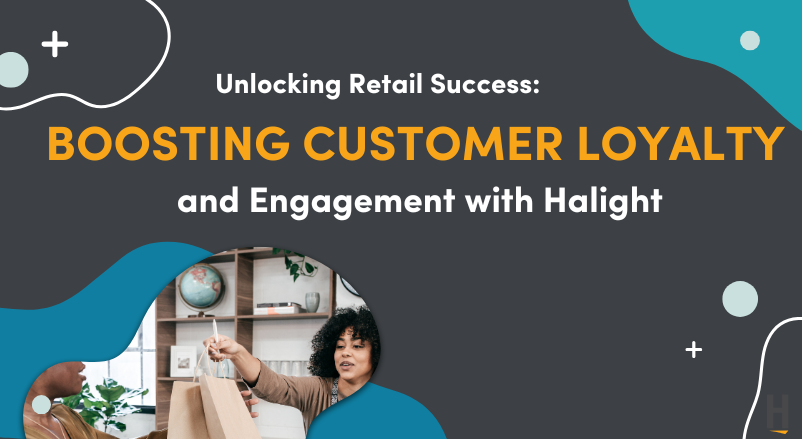Achieving success requires more than just offering quality products or competitive pricing. It’s about building strong customer relationships and delivering exceptional experiences at every touchpoint. Retail success hinges on creating loyal customers, optimizing customer engagement strategies, and implementing tools that enhance both employee and customer satisfaction. Halight’s innovative learning management solutions enable businesses to foster a culture of learning and engagement, empowering teams to drive customer loyalty and retail success.
The Foundation of Retail Success: Empowering Teams with Knowledge
The success of any retail operation starts with a well-trained team. Employees who understand customer behavior, embrace omnichannel marketing strategies, and can confidently recommend products play a pivotal role in creating a seamless customer journey. Halight’s training programs equip retail teams with the tools they need to master their roles and exceed customer expectations.
Why Knowledge is Key to Success
- Boosting Employee Confidence: Knowledgeable employees feel empowered to make informed decisions, enhancing their ability to deliver outstanding customer service.
- Driving Customer Loyalty: Training focused on customer needs and preferences ensures associates can build meaningful connections, turning new customers into loyal advocates. This ultimately increases customer lifetime value.
- Streamlining the Customer Journey: Understanding key touchpoints and customer interactions helps associates provide a frictionless experience, whether in-store, online, or through mobile apps.
Common Training Pitfalls and How to Avoid Them
Even the best intentions can falter if training programs aren’t designed with the learner in mind. Many retailers struggle with outdated training methods that fail to resonate with today’s employees. Halight addresses these challenges head-on by offering cutting-edge solutions that optimize learning experiences.
Pitfalls to Watch For:
- Cognitive Overwhelm: Overloading employees with too much information at once leads to confusion and poor retention.
- Ineffective Strategies: One-size-fits-all training approaches fail to address diverse learning styles and customer engagement goals.
- Disconnected Learning: Focusing solely on sales techniques without integrating real-world applications leaves employees unprepared for dynamic customer interactions.
The Halight Solution:
Halight delivers flexible learning solutions that prioritize knowledge retention, employee engagement, and actionable insights. From gamified learning experiences to personalized training modules, Halight ensures teams are equipped to thrive in a fast-paced retail environment.
Retail Success Strategies with Halight
Halight’s innovative training solutions are designed to foster a culture of continuous improvement and customer-centricity. Here’s how we help businesses achieve lasting success:
1. Gamified Learning for Maximum Engagement
Incorporating elements like leaderboards, badges, and incentives turns training into a competitive and enjoyable experience. This approach not only keeps employees motivated but also helps them retain critical information for longer.
2. Mobile Learning for On-the-Go Access
Retail employees often juggle busy schedules and multiple responsibilities. Mobile apps powered by Halight provide convenient, on-demand access to training materials, ensuring associates can learn at their own pace without disrupting daily operations.
3. Understanding Customer Behavior
By training employees to analyze customer data and behavior patterns, Halight equips teams to anticipate needs, recommend tailored solutions, and implement personalized promotions that enhance the overall shopping experience.
4. Continuous Learning Culture
Ongoing education is critical for adapting to evolving retail trends and maintaining high levels of customer satisfaction. Halight’s interactive training content supports continuous development, ensuring employees remain confident and capable.
5. Leveraging Real-Time Feedback
Instant feedback during training sessions helps employees refine their skills and apply new techniques with confidence. Halight’s real-time feedback mechanisms ensure learning is effective and actionable.
The Power of Customer Loyalty and Engagement
Retail success is about more than one-time transactions; it’s about cultivating lasting relationships. Loyal customers drive repeat purchases, referrals, and word-of-mouth marketing that can exponentially grow your customer base. Halight’s focus on creating brand advocates ensures your team delivers exceptional experiences that build trust and foster long-term loyalty.
Key Benefits of Enhanced Engagement:
- Increased Brand Loyalty: Personalized interactions create a connection that keeps customers coming back.
- Improved Customer Retention: Loyal customers are more likely to make repeat purchases and recommend your brand to others.
- Optimized Profitability: Engaged employees drive higher sales and create more profitable customer relationships.
Integrating Social Media for Omnichannel Success
Social media platforms are critical for maintaining customer relationships beyond the store. Training your team to engage authentically on social channels extends the reach of your loyalty programs and strengthens your brand presence. Halight incorporates social media engagement strategies into its training solutions, ensuring employees are prepared to represent your brand across every platform.
Why Knowledge Retention is Critical for Business Growth
In the fast-paced retail industry, it’s easy to lose sight of the importance of knowledge retention. However, without consistent reinforcement, even the best-trained employees can struggle to retain critical information. Halight’s training programs integrate tools like certifications, searchable resource libraries, and recorded training sessions to ensure your team remains equipped for success.
Key Knowledge Retention Strategies:
- Blended Learning: Combine multimedia elements like videos and infographics with hands-on activities for a well-rounded learning experience.
- Certifications and Milestones: Break training into manageable steps, rewarding employees for reaching milestones to keep them motivated.
- Quick Access Resources: Provide employees with on-demand tools that allow them to quickly reference product information or customer interaction techniques.
Unlocking Retail Success with Halight
Retail success is about more than just meeting sales goals; it’s about creating a culture of engagement, loyalty, and continuous growth. Halight’s tailored training solutions empower employees to exceed expectations, deliver personalized customer experiences, and adapt to ever-changing market demands.
Ready to take your retail operations to the next level? Schedule a discovery call with Halight today and discover how our innovative training programs can transform your business, drive sales, foster customer loyalty, and unlock true retail success.ss.
